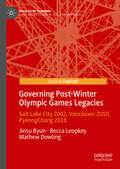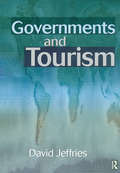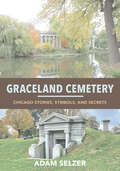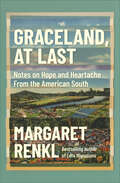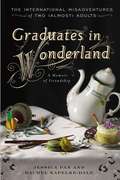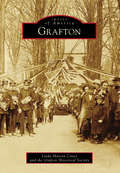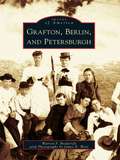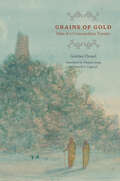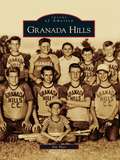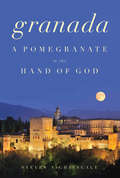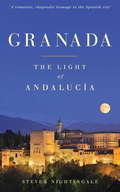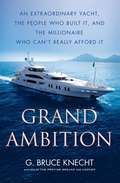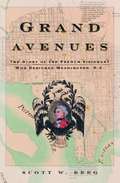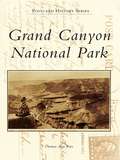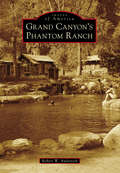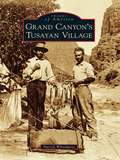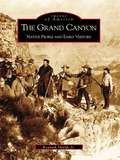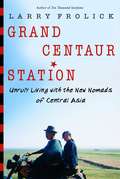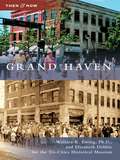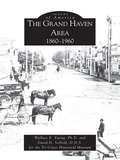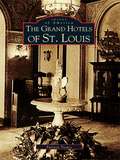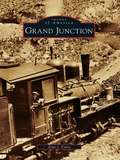- Table View
- List View
Governing Post-Winter Olympic Games Legacies: Salt Lake City 2002, Vancouver 2010, PyeongChang 2018 (Mega Event Planning)
by Mathew Dowling Jinsu Byun Becca LeopkeyThis book provides a comprehensive analysis of post-Games legacy governance including stakeholder relationships, institutional conditions, and policy environments, while also empirically exploring the modes of governance employed by select cases of the Winter Olympic Games. This work offers insights to help practitioners develop and manage the governance of legacy more effectively. Theoretical and methodological implications, as well as future avenues of research are suggested.
Governments and Tourism
by David Jeffries'Governments and Tourism' is a unique text that studies the general and specific tourism policies from central to local government. Through case studies from around the world, including the UK, USA and France, the role and function of Official Tourism Administrations (OTAs) are evaluated. Governments and Tourism is essential reading for busy practitioners,who wish to know:* How different countries and communities have coped with the opportunities and threats posed by tourism* How they plan to address future opportunities and thresats posed by tourism* What lessons can be applied elsewhere* What should be the complementary functions of the public and private sectors
Graceland Cemetery: Chicago Stories, Symbols, and Secrets
by Adam SelzerOne of Chicago’s landmark attractions, Graceland Cemetery chronicles the city’s sprawling history through the stories of its people. Local historian and Graceland tour guide Adam Selzer presents ten walking tours covering almost the entirety of the cemetery grounds. While nodding to famous Graceland figures from Marshall Field to Ernie Banks to Ludwig Mies van der Rohe, Selzer also leads readers past the vaults, obelisks, and other markers that call attention to less recognized Chicagoans like: Jessie Williams de Priest, the Black wife of a congressman whose 1929 invitation to a White House tea party set off a storm of controversy; Engineer and architect Fazlur Khan, the Bangladeshi American who revived the city's skyscraper culture; The still-mysterious Kate Warn (listed as Warn on her tombstone), the United States’ first female private detective. Filled with photographs and including detailed maps of each tour route, Graceland Cemetery is an insider's guide to one of Chicago's great outdoor destinations for city lore and history.
Graceland, At Last: Notes on Hope and Heartache From the American South
by Margaret Renkl“In this luminous collection” a New York Times columnist “delivers smart, beautifully crafted personal and political observations” on the American south (Minneapolis Star Tribune).Margaret Renkl’s New York Times columns offer readersa weekly dose of natural beauty, human decency, and persistent hope from her home in Nashville. Now more than sixty of those pieces have been brought together in this sparkling collection.“People have often asked me how it feels to be the ‘voice of the South,’” writes Renkl in her introduction. “But I’m not the voice of the South, and no one else is, either.” There are many Souths—red and blue, rural and urban, mountain and coast, Black and white and brown—and no one writer could possibly represent all of them. In Graceland, At Last, Renkl writes instead from her own experience about the complexities of her homeland.In a patchwork quilt of essays, Renkl also highlights other voices of the South. Teenagers who organized a youth march for Black Lives Matter. An urban shepherd whose sheep remove invasive vegetation. Church parishioners sheltering the homeless. Throughout, readers will find a generosity of spirit and deep attention to the world, human and nonhuman. From a writer who “makes one of all the world’s beings” (NPR), Graceland, At Last is a book for Southerners and non-Southerners alike.“E.B. White suggested that newspapers cover nature as eagerly as commerce. . . . Renkl . . . seems like a belated answer to White . . . [crafting] graceful sentences that White would surely have enjoyed.” —Wall Street Journal“Margaret Renkl’s perspective feels like a guiding light . . . No matter where you’re from, column after column, Renkl will make you feel right at home.” ?Pittsburgh Post-Gazette
Graduates in Wonderland
by Rachel Kapelke-Dale Jessica PanTwo best friends document their post-college lives in a hilarious, relatable, and powerfully honest epistolary memoir. Fast friends since they met at Brown University during their freshman year, Jessica Pan and Rachel Kapelke-Dale vowed to keep in touch after their senior year through in-depth--and brutally honest--weekly e-mails. After graduation, Jess packs up everything she owns and moves to Beijing on a whim, while Rachel heads to New York to work for an art gallery and to figure out her love life. Each spends the next few years tumbling through adulthood and reinventing themselves in various countries, including France, China, and Australia. Through their messages from around the world, they swap tales of teaching classes of military men, running a magazine, and flirting in foreign languages, along with the hard stuff: from harrowing accidents to breakups and breakdowns. Reminiscent of Sloan Crosley's essays and Lena Dunham's Girls, Graduates in Wonderland is an intimate, no-holds-barred portrait of two young women as they embark upon adulthood.
Grafica della Strada
by Louise FiliFor more than three decades, renowned graphic designer and self-described Italophile Louise Fili has traveled the cities and countryside of Italy cataloging the work of sign craftsmen in whose hands type takes on new life with a tantalizing menu of styles. Classical, eclectic, or Futurist; in gold leaf, marble, brass, wood, wrought iron, enamel, ceramic, or neon; painted, carved, inlaid, etched, tiled, or stenciled-- the creative possibilities are endless. Grafica della Strada is Fili's photographic diary of hundreds of Italy's most inventive restaurant, shop, hotel, street, and advertising signs. A major influence on Fili's own work, many of these marvels of vernacular design live on solely in this book, a typographic love letter to Italy that will be an inspiration to designers and Italophiles everywhere.
Grafica della Strada: The Signs of Italy
by Louise FiliFor more than three decades, renowned graphic designer and self-described Italophile Louise Fili has traveled the cities and countryside of Italy cataloging the work of sign craftsmen in whose hands type takes on new life with a tantalizing menu of styles. Classical, eclectic, or Futurist; in gold leaf, marble, brass, wood, wrought iron, enamel, ceramic, or neon; painted, carved, inlaid, etched, tiled, or stenciled— the creative possibilities are endless. Grafica della Strada is Fili's photographic diary of hundreds of Italy's most inventive restaurant, shop, hotel, street, and advertising signs. A major influence on Fili's own work, many of these marvels of vernacular design live on solely in this book, a typographic love letter to Italy that will be an inspiration to designers and Italophiles everywhere.
Grafton (Images of America)
by Linda Marean Casey Grafton Historical SocietyNestled in the hills 38 miles west of Boston, the area that would become Grafton originally belonged to the Nipmuc Indians. In the mid-1600s, John Eliot, a Puritan missionary, traveled throughout Massachusetts converting the natives to Christianity. He created a series of "praying Indian" villages, including Hassanamesit. In 1728, most of Hassanamesit was purchased by a group of investors, and in 1735 it was incorporated as the town of Grafton. By the early 19th century, Grafton was a national leader in leather tanning and shoe production. Textile mills appeared along the rivers, attracting emigrant workers from Canada and Europe. Three geographic areas evolved, each with its own identity: Grafton Center, North Grafton, and South Grafton. Today, residents celebrate the differences and salute the forces that brought them together to form one united town. Grafton is the birthplace of the famous Willard clock makers--Simon, Benjamin, Ephraim, and Aaron--whose home and clock shop are now the Willard House and Clock Museum. Grafton is the birthplace of Robert Bailey Thomas, the founder, editor, and publisher of the Old Farmer's Almanac. Native Jerome Wheelock invented a steam valve system, revolutionizing transportation worldwide. Grafton is also the childhood home of noted American poet Frank O'Hara.
Grafton, Berlin, and Petersburgh (Images of America)
by Warren F. Broderick James E. WestGrafton, Berlin, and Petersburgh captures a vivid picture of a long lost way of life in upstate New York. Filled with unforgettable photographs by James E. West, the book artistically portrays the proud people, quiet streets, and breathtaking panoramas of eastern Rensselaer County from1880 to 1915. For the first time, these historical photographsfrom the West collection are presented in a single volume. Anative of Grafton, James Emmett West set up a photographic business in 1878, began working in earnest in the Grafton-Berlin-Petersburgh region, and traveled in hishorse-drawn wagon, f ully equipped with a studio and darkroom.
Grains of Gold: Tales of a Cosmopolitan Traveler (Buddhism and Modernity)
by Gendun Chopel“Translated with grace and precision . . . gives us a rare glimpse of how Asian religion and life appeared from the perspective of the Tibetan plateau.” —Janet Gyatso, Harvard UniversityIn 1941, philosopher and poet Gendun Chopel sent a manuscript by ship, train, and yak across mountains and deserts to his homeland in Tibet. He would follow it five years later, returning to his native land after twelve years in India and Sri Lanka. But he did not receive the welcome he imagined: he was arrested by the government of the regent of the young Dalai Lama on trumped-up charges of treason. He emerged from prison three years later a broken man and died soon after. Gendun Chopel was a prolific writer, yet he considered that manuscript, to be his life’s work, one to delight his compatriots with tales of an ancient Indian and Tibetan past, Now available for the first time in English, Grains of Gold is a unique compendium of South Asian and Tibetan culture that combines travelogue, drawings, history, and ethnography. Chopel describes the world he discovered in South Asia, from the ruins of the sacred sites of Buddhism to the Sanskrit classics he learned to read in the original. He is also sharply, often humorously critical of the Tibetan love of the fantastic, bursting one myth after another and finding fault with the accounts of earlier Tibetan pilgrims. The work of an extraordinary scholar, Grains of Gold is a compelling work animated by a sense of discovery of both a distant past and a strange present.“The magnum opus of arguably the single most brilliant Tibetan scholar of the twentieth century.” —Lauran Hartley, Columbia University
Granada Hills
by Jim HierThe modern history of Granada Hills began in 1913 with the completion of the Los Angeles aqueduct and the arrival of abundant freshwater to the former land of Mission San Fernando. Citrus orchardsflourished on the Sunshine Ranch, acreage originally cultivated by former senator George K. Porter. In 1926, the community of Granada was formed as a rabbit-raising colony, promising residents country living and economic prosperity. Granada added "Hills" to its name in 1942 to avoid confusion with a similarly named Northern California town, andthanks to the postwar baby boom, the population grew by 1,000 percent between 1950 and 1960. The community soon earned a reputation as "The San Fernando Valley's Most Neighborly Town" as residents came together to celebrate the hometown team's 1963 Little League World Series victory and the formation of the nation's first all-girl American Youth Soccer Organization league, and as neighbor helped neighborafter the devastating 1971 and 1994 earthquakes.
Granada: A Pomegranate in the Hand of God
by Steven NightingaleAndalusia: ancient homeland of the mysterious Iberians, birthplace of Roman emperors, seedbed of modern Anarchism, and unmarked gravesite of Spain's greatest lyric poet. Perhaps most importantly, Andalusia is home to the city of Granada, where a hybrid culture composed of Islamic, Jewish, and Christian traditions gave rise to an intellectual vanguard whose achievements can be compared only with those of classical Athens, Ming China, or Renaissance Italy. Granada resident Steven Nightingale excavates the rich past of his adopted city and its surrounding countryside, finding there a lavish story of utopian ecstasy, political intrigue, and finally anguish. Part of that region in southern Spain named by its Islamic rulers "Al-Andalus," medieval Granada witnessed a flourishing of poetry in several languages, the first modern translations of Greek philosophy, the birth of algebra, and the construction of architectural masterpieces such as the Alhambra and the Generalife. Yet with Ferdinand and Isabella's sack of Granada in 1492, regarded as the culmination of the Reconquista, which sought to reclaim Spain for the Vatican, a Catholic mythology of Spain began to erode Granada's centuries-old reputation as an artistically vital haven for multiple ethnic and religious groups. Linking the disastrous afterlife of the Reconquista to the Catholic nationalism of the Franco regime-whose execution of Granadan poet Federico Garcia Lorca symbolizes the suppression of Andalusia's cultural heritage-Nightingale demonstrates the extent to which this Catholic triumphalism also obscured the source of much cultural wealth bequeathed by Al-Andalus to Christian Europe. Nightingale's own account of the region's medieval zenith recovers the intellectual pageantry and aesthetic splendor of this astounding period in Western history and the marvelous city that was its cultural center.
Granada: The Light of Andalucía
by Steven NightingaleAN INDEPENDENT TRAVEL BOOK OF THE YEARA TELEGRAPH TRAVEL BOOK OF THE YEARYearning for a change, Steven Nightingale took his family to live in the ancient Andalucian city of Granada. But as he journeyed through its hidden courtyards, scented gardens and sun-warmed plazas, Steven discovered that Granada's present cannot be separated from its past, and began an eight-year quest to discover more. Where once Christians, Muslims and Jews lived peacefully together and the arts and sciences flourished, Granada also witnessed brutality: places of worship razed to the ground, books burned, massacre and anarchy. In the 1600s the once-populous city was reduced to 6,000 who lived among rubble. In the next three centuries, the deterioration worsened, and the city became a refuge for anarchists; then during the Spanish Civil War, fascism took hold. Literary and sensual, Steven Nightingale produces a portrait of a now-thriving city and the joy he discovered there, revealing the resilience and kindness of its people, the resonance of its gardens and architecture and the cyclical nature of darkness and light in the history of Andalucia. At once personal and far-reaching, Granada is an epic journey through the soul of this most iconic of cities.
Grand Ambition: An Extraordinary Yacht, the People Who Built It, and the Millionaire Who Can't Really Afford It
by G. Bruce KnechtG. Bruce Knecht, former reporter for The Wall Street Journaland author of The Proving Ground and Hooked, describes the creation of an outsized yacht in a sweeping narrative centered on the men and women who made it happen.Doug Von Allmen, a self-made man who grew up in a landlocked state dreaming of the ocean, was poised to build a 187-foot yacht that would cost $40 million. Lady Linda would not be among the very largest of the burgeoning fleet of oceangoing palaces, but Von Allmen vowed that it would be the best one ever made in the United States. Nothing would be ordinary. The interior walls would be made from rare species of burl wood, the floors paved with onyx and exotic types of marble, the furniture custom made, and the art specially commissioned. But the 2008 economic crisis changed everything. Von Allmen&’s lifestyle suddenly became unaffordable. Then it got worse: desperate to reverse his losses, he fell for an audacious Ponzi scheme. Would Von Allmen be able to complete Lady Linda? Would the shipyard and its one thousand employees survive the financial meltdown? The divide between the very rich and everyone else had never been greater, yet the livelihoods of the workers, some of them illegal immigrants, and the yacht owners were inextricably intertwined. In a sweeping, high-stakes narrative, the critically acclaimed author of The Proving Ground and Hooked weaves Von Allmen&’s story together with those of the men and women who are building his yacht. As the pursuit of opulence collides with the reality of economic decline, everyone involved in the massive project is forced to rethink the meaning of the American Dream.
Grand Avenue:The Story of the French Visionary Who Designed Washington DC
by Scott W. BergGrand Avenues tells the riveting story of Pierre Charles L'Enfant and the creation of Washington, D.C. from the seeds of his inspiration to the fulfillment of his extraordinary vision. L'Enfant's story is one of consuming passion, high emotion, artistic genius, and human frailty. As a boy he studied drawing at the most prestigious art academy in the world. As a young man he left his home in Paris to volunteer in the army of the American colonies, where he served under George Washington. There he would also meet many of the people who would have a profound impact on his life, including Alexander Hamilton and James Monroe. And it was Washington himself who, in 1791, entrusted L'Enfant with the planning of the nation's capital and reluctantly allowed him to be dismissed from the project eleven months later. The plan for the city was published under another name, and for the remainder of his life L'Enfant fought for recognition of his achievement. But he would not live to see that day, and a century would pass before L'Enfant would be given credit for his brilliant design. Scott W. Berg recounts this tale, richly evocative of time and place, with the narrative verve of a novel and a cast of characters that ranges from Thomas Jefferson and the other Founding Fathers to the surveyor who took credit for L'Enfant's plans, the assistant who spent a week in jail for his loyalty to L'Enfant, and the men who finally restored L'Enfant's reputation at the beginning of the twentieth century. Here is a fascinating, little-explored episode in American history: the story of a visionary artist and of the founding of the magnificent city that is his enduring legacy.
Grand Canyon National Park
by Thomas Alan RatzArizona is proud to have one of the Seven Natural Wonders of the World--the Grand Canyon. With the arrival of the Santa Fe and Union Pacific Railroad in the early 20th century, the development of the canyon began in earnest. The railroads, along with the Santa Fe's business partner, the Fred Harvey Company, greatly promoted the Grand Canyon as a tourist destination through books, pamphlets, and magazine advertisements. On February 26, 1919, Congress established the Grand Canyon National Park, and the federal government became a promoter of the Grand Canyon, too. But perhaps the best promoters of the Grand Canyon were the people who wrote home on picture postcards telling their friends and families about the amazing canyon. A number of the postcards published about the park can be found within the pages of this book.
Grand Canyon's Phantom Ranch
by Robert W. AudretschPhantom Ranch is nestled in the Grand Canyon basin on the Colorado River--a location hardly visible from the rim and only accessible after a journey through scores of geologic layers. The only way there is by river rafting, hiking, or mule, and with each foot of the journey, the traveler descends 30,000 years in geologic time. While at Phantom Ranch, the view looking above is of 1.7 billion years of geology, all swirling together in an alphabet of colors. Grand Canyon's Phantom Ranch is the story of the rustic buildings designed by architect Mary Jane Colter in 1921, of the park's first peoples, river rafters, the early trail and bridge builders, and dramatic flash floods. When travelers leave Phantom Ranch, they are never the same. For some of them, departing is as if they have just said good-bye to an old friend.
Grand Canyon's Tusayan Village (Images of America)
by Patrick WhitehurstWith the glamorous Grand Canyon as its backyard, Tusayan has a fascinating history. Dedicated just one year after the Grand Canyon National Park, the village of Tusayan had its humble beginnings in 1920 as a small sheep ranch operated by the Hull brothers. Tusayan quickly became a hub for the millions of travelers who made their way to the Grand Canyon each year. The two areas share a mutual school, a health care center, and other amenities. Other pioneers, such as R. P. Thurston, helped ensure the area's longevity with the addition of Highway 64 through the center of the village and the arrival of the Grand Canyon Airport, making Tusayan one of the most visited little towns in northern Arizona.
Grand Canyon, The: Native People and Early Visitors
by Kenneth Shields Jr.Unlike appreciating America's other natural wonders such as waterfalls, glaciers, mountains, or prairies, one must struggle to absorb, assimilate, and comprehend the Grand Canyon's tremendous scale. Captured here in over 250 vintage images is the human drama of survival and coexistence in the canyon, from the native tribes who struggled with life on the rim, to the pioneers who came to foster and manipulate the early tourist industry in America's oldest natural resource. Covering the tribes that called the canyon home and the seekers who flocked to the area to find their fortune in gold and tourism, author Kenneth Shields exposes the human layers so often overlooked. Seen here are the native tribes who survived the harshest conditions of the canyon, including the Hopi, Havasupai, Navajo, and Paiute. Readers will recognize the images of popular tourist spots like the El Tovar Hotel and the Navajo Bridge, as well as the early conservationist faces of Presidents Theodore Roosevelt and William Taft.
Grand Centaur Station: Unruly Living With the New Nomads of Central Asia
by Larry FrolickWith the grim determination of an unrepentant rocker, Larry Frolick sets off on a 12,000-mile trek across Central Asia, brooding over the fate of its lost civilizations. From Kiev, Crimean Tartary, and Moscow, through the nomadic homelands of Uzbekistan, Kyrgizstan, Tien-Shan, and finally into distant Mongolia and Siberia, he explores a continent on the brink of a meltdown, a strange world lit harshly by the red afterglow of the Soviet collapse. His vivid account opens the door to a crowd of unlikely strangers: Mafiosi flatheads, salt-mine campers, fractious archaeologists, a conceptual artist who uses fresh corpses in his window displays, the very last of three Romanov princesses, an inept Chinese secret agent, a relentless Uzbek glottal probologist, disgruntled e-mail swains – and above all, Larissa, the moody Eurasian beauty who “just stepped out of a novel in her impossibly pointy Italian shoes. ” With gleeful wit and a steely eye for detail, Frolick transports the reader to a world inhabited by a people burning with desire for something new to happen.
Grand Forks: A History of American Dining in 128 Reviews
by Marilyn HagertyOnce upon a time, salad was iceberg lettuce with a few shredded carrots and a cucumber slice, if you were lucky. A vegetable side was potatoes—would you like those baked, mashed, or au gratin? A nice anniversary dinner? Would you rather visit the Holiday Inn or the Regency Inn? In Grand Forks, North Dakota, a small town where professors moonlight as farmers, farmers moonlight as football coaches, and everyone loves hockey, one woman has had the answers for more than twenty-five years: Marilyn Hagerty. In her weekly Eatbeat column in the local paper, Marilyn gives the denizens of Grand Forks the straight scoop on everything from the best blue plate specials—beef stroganoff at the Pantry—to the choicest truck stops—the Big Sioux (and its lutefisk lunch special)—to the ambience of the town's first Taco Bell. Her verdict? "A cool pastel oasis on a hot day."No-nonsense but wry, earnest but self-aware, Eatbeat also encourages the best in its readers—reminding them to tip well and why—and serves as its own kind of down-home social register, peopled with stories of ex–postal workers turned café owners and prom queen waitresses. Filled with reviews of the mom-and-pop diners that eventually gave way to fast-food joints and the Norwegian specialties that finally faded away in the face of the Olive Garden's endless breadsticks, Grand Forks is more than just a loving look at the shifts in American dining in the last years of the twentieth century—it is also a surprisingly moving and hilarious portrait of the quintessential American town, one we all recognize in our hearts regardless of where we're from.
Grand Haven
by Wallace K. Ewing Tri-Cities Historical Museum Elizabeth DobbieAs fur trading in Michigan came to an end, pioneers migrated to Grand Haven for lumber. By the time the last acre of trees was harvested, Grand Haven had shifted from dependence on lumber to manufacturing and tourism. These images illustrate the foundations upon which the community was built and changes wrought through the years.
Grand Haven Area 1860-1960, The
by Wallace K. Ewing David H. Seibold D.D.S. Tri-Cities Historical MuseumGrand Haven is nestled in wooded dunes and surrounded by the waters of Lake Michigan, Spring Lake, and the Grand River. Under the leadership of Rev. William Montague Ferry, the first settlers arrived from Mackinac Island November 2, 1834. In recognition of the port's large, accommodating and safe harbor, Rix Robinson, fur trader and land holder, platted and named the town April 15, 1835. The approximately 200 photographs in this book are from the archives of the Tri-Cities Historical Museum. They provide an invaluable visual glimpse of the places, people, and events that shaped the Grand Haven area, which also includes Ferrysburg and Spring Lake, in the critical century between 1860 and 1960. In Grand Haven's early years the lumber industry took advantage of the towering white pines that grew for miles around, providing lumber for Chicago, Milwaukee, and other port cities. During this period the mineral water spas in Spring Lake, Fruitport, and Grand Haven spawned the area tourist industry that is still alive today. By 1890 the large tracts of forest were gone and the area sawmills closed. The slack was taken up by the Grand Trunk carferries, which began cross-lake service in 1903, making Grand Haven one of the busiest ports on Lake Michigan for the next 30 years.
Grand Hotels of St. Louis, The
by Patricia TreacyThe Roaring Twenties was a period of lavish living in St. Louis. In 1917, when Ellsworth Statler decided to build a hotel in St. Louis, he ignited a hotel-building boom that was only quenched by the Great Depression of 1929. Architectural masterpieces arose, and local citizens and out-of-towners marveled at their grandeur. These hotels were hubs of activity and gathering places for high society. They survived the Great Depression and two world wars, but urban demise forced elegant hotels to crumble in disrepair. This book tells the intriguing stories of the Statler, the Chase, the Mayfair, the Lennox and the Coronado Hotels. Today, these hotels are restored and renewed--as glamorous now as they were in their earliest days. They welcome visitors to admire their beauty and savor the history they hold.
Grand Junction
by Alan KaniaThe Ute Indians were hardly out of western Colorado when their land was opened to Anglo settlers. It was on September 26, 1881, when George A. Crawford, William McGinley, R. D. Mobley, M. R. Warner, and others went to the junction of the Gunnison and Grand (later renamed the Colorado) Rivers to claim 640 acres. In the semiarid confluence of the two rivers, a city developed, fruit orchards were planted, and a college grew out of the seeds of a single-room school with a dirt floor. Several newspapers opened, providing news and information to a business community that included coal mining, railroads, dry goods, and even a toffee factory whose products have graced the tables of royalty. How Grand Junction was able to develop into a progressive community of entrepreneurs, educators, and community-minded citizens is a story best told in a small sampling of pictures. None of the founders are still here, but their legacy, stories, and pictures have survived to speak for them.
